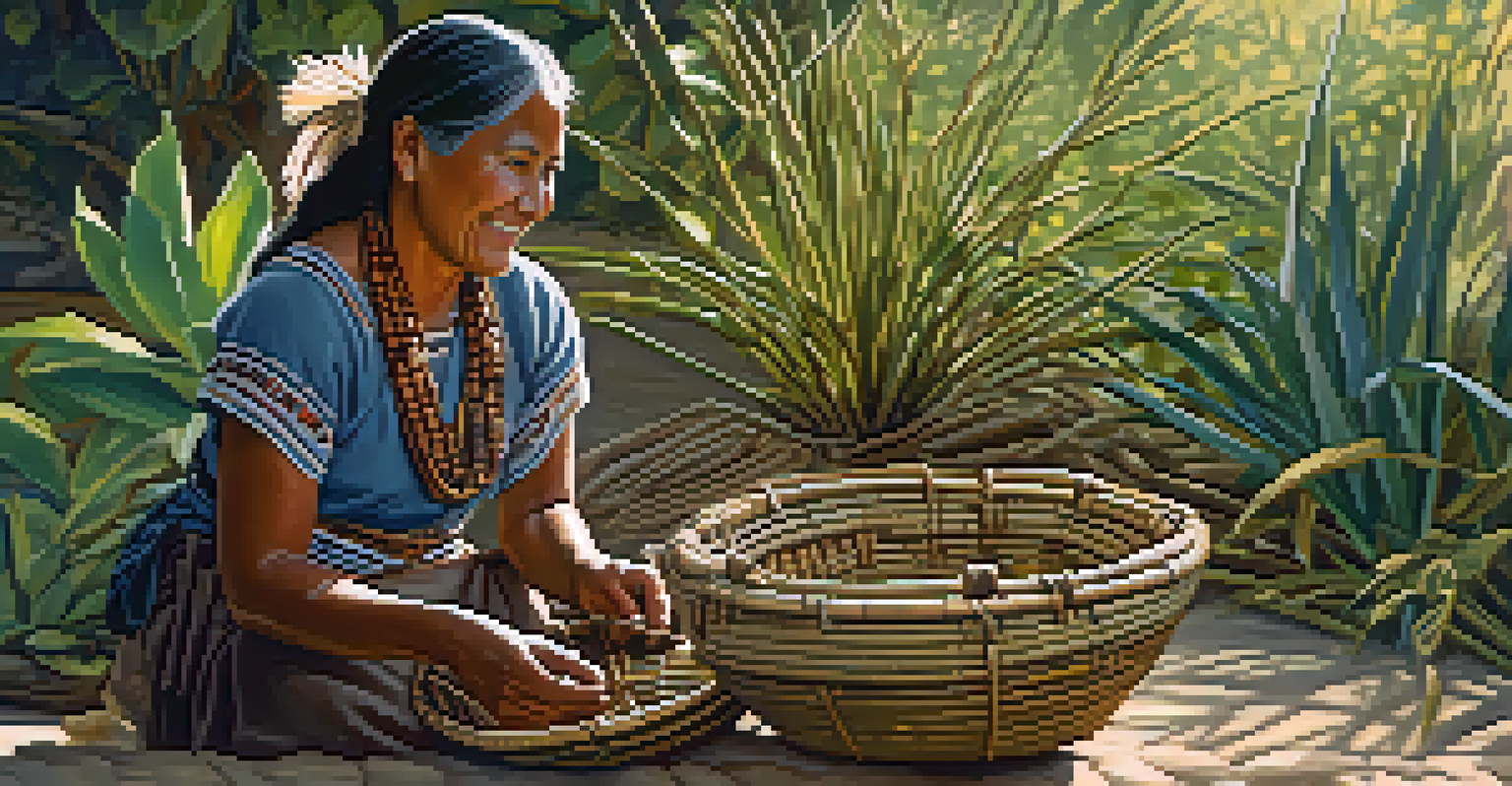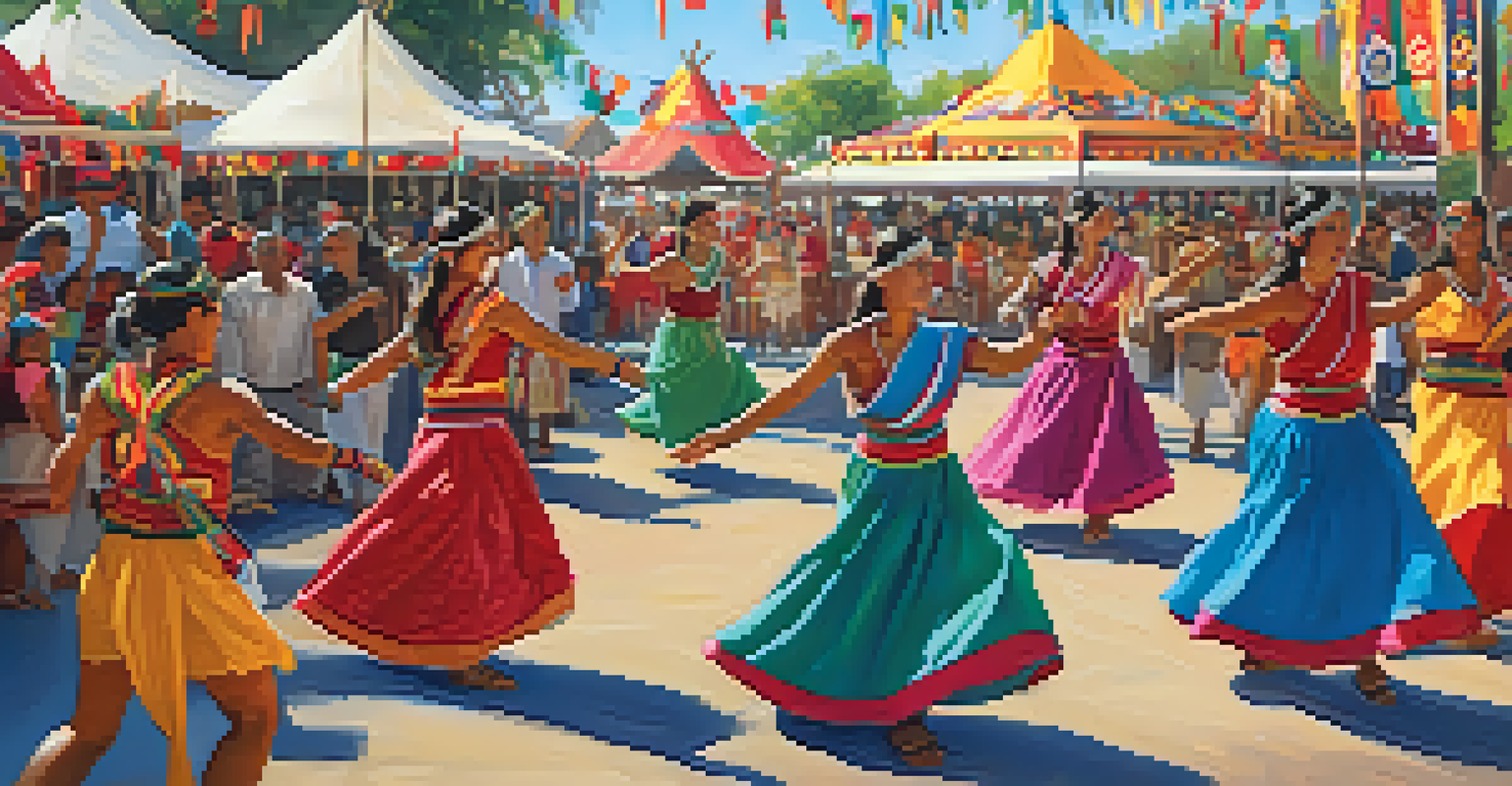The Indigenous Peoples of Carlsbad: A Historical Overview

Introduction to Carlsbad's Indigenous Heritage
Carlsbad, located in Southern California, has a rich tapestry of history that includes its Indigenous Peoples. The area was originally inhabited by various tribes, primarily the Luiseño, who thrived in the coastal and inland regions. Understanding their heritage is crucial to appreciating the cultural landscape of Carlsbad today.
The land is our history, our culture, and our identity.
These Indigenous communities lived in harmony with the land, utilizing the natural resources around them for food, shelter, and community. Their connection to the environment is a testament to their resilience and adaptation over centuries. The Luiseño, along with other tribes, developed intricate social structures and traditions that continue to influence the region.
As we delve into the history of these Indigenous Peoples, we will uncover the stories, struggles, and ongoing contributions that shape the identity of Carlsbad. This journey will highlight their significance in the broader narrative of California's history.
The Luiseño Tribe: A Closer Look
The Luiseño people, one of the primary Indigenous groups in the Carlsbad area, have a rich cultural heritage that dates back thousands of years. Their name, meaning 'people of the south,' reflects their geographical ties to Southern California. They were traditionally hunter-gatherers, relying on the diverse ecosystems for sustenance.

In addition to their food sources, the Luiseño developed a vibrant culture, rich with art, music, and storytelling. These cultural practices were not only forms of expression but also means of preserving their history and teachings for future generations. The tribe's spiritual beliefs were deeply tied to the landscape, viewing nature as sacred.
Rich Luiseño Cultural Heritage
The Luiseño tribe has a vibrant culture rooted in thousands of years of history, showcasing their deep connection to the land through traditions, art, and spirituality.
Today, the Luiseño tribe continues to play an active role in the community, working to preserve their language, traditions, and cultural practices. Their resilience in the face of challenges is a powerful reminder of the importance of cultural preservation.
Impact of Colonization on Indigenous Communities
The arrival of European settlers in the late 18th century drastically altered the lives of Indigenous Peoples in Carlsbad. Colonization brought new diseases, land dispossession, and cultural disruption. Many Indigenous people faced significant challenges as their traditional ways of life were threatened.
Language is the road map of a culture. It tells you where its people come from and where they are going.
Missionization was a significant aspect of colonization, with missionaries establishing missions that aimed to convert Indigenous populations to Christianity. This often involved the suppression of Indigenous beliefs and practices, leading to a loss of cultural identity for many. The impact of these changes is still felt today, as communities work to reclaim and revitalize their heritage.
Despite these challenges, Indigenous Peoples have shown remarkable resilience. Their ability to adapt and survive through adversity speaks to their strength and determination to keep their culture alive.
The Role of Language in Cultural Identity
Language plays a crucial role in the identity of Indigenous Peoples, serving as a vessel for culture, history, and traditions. The Luiseño language, like many Indigenous languages, is rich with meaning and reflects the community's worldview. However, it has faced decline over the years due to colonization and modernization.
Efforts are currently underway to revitalize the Luiseño language among younger generations. Language classes and cultural programs are being implemented to encourage fluency and understanding. This revival is essential not only for preserving the language but also for fostering a sense of pride and belonging within the community.
Impact of Colonization
Colonization brought significant challenges to Indigenous Peoples in Carlsbad, including land loss and cultural disruption, but their resilience continues to shine through efforts to reclaim their heritage.
The connection between language and identity is profound, as it shapes how individuals relate to their history and culture. By prioritizing language preservation, the Indigenous Peoples of Carlsbad are taking important steps toward cultural rejuvenation.
Traditional Practices and Modern Adaptations
Indigenous Peoples of Carlsbad have maintained many traditional practices while also adapting to contemporary life. Traditional crafts, such as basket weaving and beadwork, continue to be cherished art forms that connect community members to their heritage. These crafts are often taught to younger generations, ensuring the continuity of skills and knowledge.
In addition to traditional arts, many Indigenous communities are engaging with modern technologies to share their stories and culture. Social media platforms and websites are being used to promote cultural events, share educational resources, and connect with wider audiences. This blend of tradition and modernity reflects the dynamic nature of Indigenous identity.
Through these adaptations, Indigenous Peoples demonstrate their resilience and innovation. They actively shape their narratives while staying rooted in their rich cultural heritage.
Current Initiatives for Cultural Preservation
Today, several initiatives aim to preserve and promote the cultures of Indigenous Peoples in Carlsbad. Local organizations and tribal councils are spearheading programs that focus on cultural education, language revitalization, and community engagement. These initiatives foster a sense of pride and connection to Indigenous heritage.
Cultural festivals and events are also significant in celebrating Indigenous traditions. These gatherings provide opportunities for storytelling, traditional dances, and sharing of foods, creating a vibrant atmosphere that honors the past while looking towards the future. They serve as vital spaces for community bonding and cultural transmission.
Language and Identity Revival
Efforts to revitalize the Luiseño language are crucial for cultural preservation, fostering pride and a sense of belonging within the community.
As more people recognize the importance of Indigenous cultures, support for these initiatives continues to grow. This collective effort helps ensure that the rich history of Carlsbad's Indigenous Peoples is not only remembered but celebrated.
Looking Toward the Future: Indigenous Empowerment
The future of Indigenous Peoples in Carlsbad hinges on empowerment and self-determination. By reclaiming their narratives and actively participating in decision-making processes, Indigenous communities can create a sustainable path forward. This empowerment is essential in addressing historical injustices and fostering a more equitable future.
Education plays a pivotal role in this journey. By raising awareness about Indigenous histories and cultures within the wider community, we can foster understanding and respect. Collaborative efforts between Indigenous and non-Indigenous populations can lead to a more inclusive society that values diversity.

As we look toward the future, it is vital to support Indigenous voices and initiatives. The legacy of Carlsbad's Indigenous Peoples is rich and vibrant, and by working together, we can ensure it continues to thrive for generations to come.